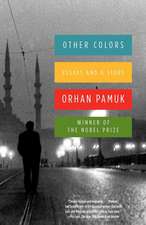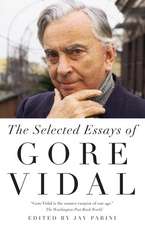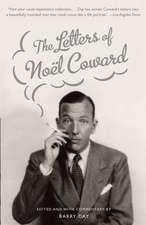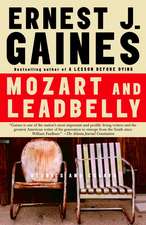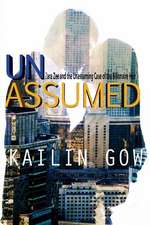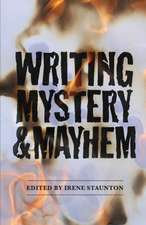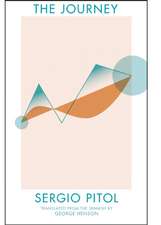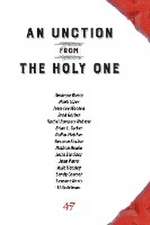Finding Beauty in a Broken World
Autor Terry Tempest Williamsen Limba Engleză Paperback – 30 sep 2009
In her compassionate meditation on how nature and humans both collide and connect, Williams affirms a reverence for all life, and constructs a narrative of hopeful acts, taking that which is broken and creating something whole.
Preț: 105.34 lei
Nou
Puncte Express: 158
Preț estimativ în valută:
20.16€ • 21.10$ • 16.78£
20.16€ • 21.10$ • 16.78£
Carte disponibilă
Livrare economică 10-24 martie
Preluare comenzi: 021 569.72.76
Specificații
ISBN-13: 9780375725197
ISBN-10: 0375725199
Pagini: 420
Dimensiuni: 132 x 201 x 25 mm
Greutate: 0.34 kg
Editura: Vintage Books USA
ISBN-10: 0375725199
Pagini: 420
Dimensiuni: 132 x 201 x 25 mm
Greutate: 0.34 kg
Editura: Vintage Books USA
Recenzii
“Beauty is Williams's most important, most visceral, most demanding work. It should–no must–be read.” –The Baltimore Sun
“An amalgam of art, intellect, ecology and spirit. . . . Moving. . . . Terry Tempest Williams’s tools are words, ideas, sentences, fragments. . . . She uses them to dig into chosen corners of our world, and to illuminate some unknowns in flickering light.” –The Washington Times
“Sublime art. . . . An ambitious, even audacious, work.” –The Denver Post
“Intense, tough, profound. . . . This is an ambitious, risk-taking book that defies narrative conventions and avoids signpost solutions. Yet it also prompts reflection, inspiration, and awe. . . . A resounding hymn to creativity, community and engagement.” –Seattle Post-Intelligencer
“Williams is an ecosystem writer--concepts in her world are joined together by physical and spiritual threads...Finding Beauty in a Broken World offers its answers in fragments, pieces–as a mosaic must…. And yet there is always beauty.” –Los Angeles Times
“Wonderfully descriptive.” –San Francisco Chronicle
“In Finding Beauty in a Broken World, Williams discovers her way along a path that, though at times obscured, leads to an unlikely yet inspired destination. . . . Will stir and reward.” –The Oregonian
“[Finding Beauty in a Broken World] explores deeper and more lyrical territory than other books along the same theme.” –Arizona Daily Sun
“Part postmodern memoir, part historical inquiry, part cultural critique and part spiritual meditation.” –The Salt Lake Tribune
“This is an essential book. . . . Nonfiction in [Williams’s] hands is literature.” –The Bloomsbury Review
“Terry Tempest Williams has half-broken my heart with everything she has written. . . . Finding Beauty in a Broken World will break your heart and put it back together again. It is as powerful in its experiment with form as it is in meaning.” –Bill McKibben
“Williams’s affecting prose, written with the skill and economy of a poet, enlivens [Finding Beauty in a Broken World].” –Real Change
“Poignant. . . . Filled with the emotional honesty and grace that we’ve come to expect from Williams.” –High Country News
“Wide awake, utterly open, completely feeling. . . . Williams presents us with an incredible achievement, a beautiful, terrible, wonderful, hopeful witness. The farthest thing from insanity I’ve read.” –Alexandra Fuller, author of The Legend of Colton H. Bryant
“Williams knows the earth and writes about it with native intimacy, no matter the setting or continent.” –Metro Santa Cruz
“Passionate. . . . [Finding Beauty in a Broken World] will not leave the reader with the thought ‘all is well’ but with the challenged belief that the beauty in all life can be–and must be–identified, believed in and brought forth.” –New Thought
“Behave with dignity. . . . Take the broken pieces you are given and find the new harmony that holds your future. When you finish Finding Beauty in a Broken World you will look at the landscape of your own life with new eyes.” –Blogcritics magazine
“How a book could be this gentle and this heartbreaking simultaneously I do not know. . . . Terry Tempest Williams leads us with methodical accuracy into the devastations and delights of now.” –John D’Agata, author of Halls of Fame
“An amalgam of art, intellect, ecology and spirit. . . . Moving. . . . Terry Tempest Williams’s tools are words, ideas, sentences, fragments. . . . She uses them to dig into chosen corners of our world, and to illuminate some unknowns in flickering light.” –The Washington Times
“Sublime art. . . . An ambitious, even audacious, work.” –The Denver Post
“Intense, tough, profound. . . . This is an ambitious, risk-taking book that defies narrative conventions and avoids signpost solutions. Yet it also prompts reflection, inspiration, and awe. . . . A resounding hymn to creativity, community and engagement.” –Seattle Post-Intelligencer
“Williams is an ecosystem writer--concepts in her world are joined together by physical and spiritual threads...Finding Beauty in a Broken World offers its answers in fragments, pieces–as a mosaic must…. And yet there is always beauty.” –Los Angeles Times
“Wonderfully descriptive.” –San Francisco Chronicle
“In Finding Beauty in a Broken World, Williams discovers her way along a path that, though at times obscured, leads to an unlikely yet inspired destination. . . . Will stir and reward.” –The Oregonian
“[Finding Beauty in a Broken World] explores deeper and more lyrical territory than other books along the same theme.” –Arizona Daily Sun
“Part postmodern memoir, part historical inquiry, part cultural critique and part spiritual meditation.” –The Salt Lake Tribune
“This is an essential book. . . . Nonfiction in [Williams’s] hands is literature.” –The Bloomsbury Review
“Terry Tempest Williams has half-broken my heart with everything she has written. . . . Finding Beauty in a Broken World will break your heart and put it back together again. It is as powerful in its experiment with form as it is in meaning.” –Bill McKibben
“Williams’s affecting prose, written with the skill and economy of a poet, enlivens [Finding Beauty in a Broken World].” –Real Change
“Poignant. . . . Filled with the emotional honesty and grace that we’ve come to expect from Williams.” –High Country News
“Wide awake, utterly open, completely feeling. . . . Williams presents us with an incredible achievement, a beautiful, terrible, wonderful, hopeful witness. The farthest thing from insanity I’ve read.” –Alexandra Fuller, author of The Legend of Colton H. Bryant
“Williams knows the earth and writes about it with native intimacy, no matter the setting or continent.” –Metro Santa Cruz
“Passionate. . . . [Finding Beauty in a Broken World] will not leave the reader with the thought ‘all is well’ but with the challenged belief that the beauty in all life can be–and must be–identified, believed in and brought forth.” –New Thought
“Behave with dignity. . . . Take the broken pieces you are given and find the new harmony that holds your future. When you finish Finding Beauty in a Broken World you will look at the landscape of your own life with new eyes.” –Blogcritics magazine
“How a book could be this gentle and this heartbreaking simultaneously I do not know. . . . Terry Tempest Williams leads us with methodical accuracy into the devastations and delights of now.” –John D’Agata, author of Halls of Fame
Notă biografică
Terry Tempest Williams is the Annie Clark Tanner Scholar in Environmental Humanities at the University of Utah. Her books include Refuge, Leap, Red, and The Open Space of Democracy. Her writing appears frequently in journals and newspapers worldwide. She is the recipient of Lannan and Guggenheim fellowships in creative nonfiction. Williams lives in Castle Valley, Utah.
From the Hardcover edition.
From the Hardcover edition.
Extras
We watched the towers collapse. We watched America choose war.
The peace in our own hearts shattered.
How to pick up the pieces?
What to do with these pieces?
I was desperate to retrieve the poetry I had lost.
Standing on a rocky point in Maine, looking east toward the horizon at dusk, I faced the ocean. “Give me one wild word.” It was all I asked of the sea.
The tide was out. The mudflats exposed. A gull picked up a large white clam, hovered high above the rocks, then dropped it. The clam broke open, and the gull swooped down to eat the fleshy animal inside.
“Give me one wild word to follow . . .”
And the word the sea rolled back to me was “m o s a i c.”
Ravenna is the town in Italy where the west arm of Rome and the east arm of Constantinople clasped hands and agreed on a new capital of the Roman Empire in 402 AD. It was a pragmatic decision made by a shift in power, the decline of Rome and the rise of Byzantium. A spiritual history of evolving pagan and Christian perspectives can be read in a dazzling narrative of cut stones and glass.
Eloquence is spoken through the labor of hands, anonymous hands of forgotten centuries. With eyes looking up, artisans rolled gold tesserae between their fingers in thought, as they searched for the precise placement in domes and apses where light could converse with glass. Jeweled ceilings become lavish tales. I want to understand these stories told through fragments. I am an apprentice in a mosaic workshop.
Her name is Luciana. She is my teacher. Her work is unsigned, anonymous. Like the mosaicists before her who created the ancient mosaics that adorn the sacred interiors of this quiet town, she conducts the workshop in the traditional manner outlined centuries ago.
The tools required: a hammer and a hardie. The hardie is similar to a chisel and is embedded in a tree stump for stability. A piece of marble, glass, or stone, desiring to be cut, is held between the forefinger and thumb of the left hand, placed perpendicular on the hardie. The hammer that bears two cutting edges, gracefully curved, is raised in the right hand. With a quick blow, a tessera is born, the essential cube in the crea- tion of a mosaic.
Her name is Luciana. She is a mosaicist in the town of Ravenna. She has no belief in invention or innovation. “It has all been done before,” she says. “There are rules.”
1.The play of light is the first rule of mosaic.
2.The surface of mosaics is irregular, even angled, to increase the dance of light on the tesserae.
3.Tesserae are irregular, rough, individualized, unique.
4.If you are creating horizontal line, place tesserae vertically.
5.If you are creating a vertical line, place tesserae horizontally.
6.The line in mosaic is supreme; the flow of the line is what matters so the eye is never disturbed or interrupted.
7.The background is very important in emphasizing the mosaic pattern. There must always be at least one line of tesserae that outlines the pattern. Sometimes there will be as many as three lines defining the pattern as part of the background.
8.There is a perfection in imperfection. The interstices or gaps between the tesserae speak their own language in mosaics.
9.Many colors are used to create one color from afar. Different hues of the same color were always used in ancient mosaics.
10.The distance from which the mosaic is viewed is important to the design, color, and execution of the mosaic.
11.The play of light is the first and last rule of mosaic.
Luciana will tell you once that you learn the rules of ancient mosaics, only then can you break them. She places a gold piece of glass between her finger and thumb on the hardie and holds the hammer at the base of its wooden handle. Ting—she strikes the gold smalti into the exact shape she desires.
“You can learn this technique in fifteen minutes,” she says. “It will take you a lifetime to master it.”
A mosaic is a conversation between what is broken.
The very language of tesserae tells us that this harmony is only achievable through the breaking and then rediscovery of the mosaic fragments.
NATASCIA FESTA, Nittola
You will see that the vibration, the movement, the tremor, the shimmering of that lapidary colour, of that colour of stone or enamel tessera is obtained also by staggering the connection between one tessera and another, by not putting them at the same level, often by making one protrude in respect to the one next to it so as to obtain effects of marginal refraction that give a value of vibration to the entire colour.
GIULIO CARLO ARGAN, Mosaico d’amicizid fra i popoli
A mosaic is a conversation that takes place on surfaces.
A mosaic is a conversation with light, with color, with form.
A mosaic is a conversation with time.
From the Hardcover edition.
The peace in our own hearts shattered.
How to pick up the pieces?
What to do with these pieces?
I was desperate to retrieve the poetry I had lost.
Standing on a rocky point in Maine, looking east toward the horizon at dusk, I faced the ocean. “Give me one wild word.” It was all I asked of the sea.
The tide was out. The mudflats exposed. A gull picked up a large white clam, hovered high above the rocks, then dropped it. The clam broke open, and the gull swooped down to eat the fleshy animal inside.
“Give me one wild word to follow . . .”
And the word the sea rolled back to me was “m o s a i c.”
Ravenna is the town in Italy where the west arm of Rome and the east arm of Constantinople clasped hands and agreed on a new capital of the Roman Empire in 402 AD. It was a pragmatic decision made by a shift in power, the decline of Rome and the rise of Byzantium. A spiritual history of evolving pagan and Christian perspectives can be read in a dazzling narrative of cut stones and glass.
Eloquence is spoken through the labor of hands, anonymous hands of forgotten centuries. With eyes looking up, artisans rolled gold tesserae between their fingers in thought, as they searched for the precise placement in domes and apses where light could converse with glass. Jeweled ceilings become lavish tales. I want to understand these stories told through fragments. I am an apprentice in a mosaic workshop.
Her name is Luciana. She is my teacher. Her work is unsigned, anonymous. Like the mosaicists before her who created the ancient mosaics that adorn the sacred interiors of this quiet town, she conducts the workshop in the traditional manner outlined centuries ago.
The tools required: a hammer and a hardie. The hardie is similar to a chisel and is embedded in a tree stump for stability. A piece of marble, glass, or stone, desiring to be cut, is held between the forefinger and thumb of the left hand, placed perpendicular on the hardie. The hammer that bears two cutting edges, gracefully curved, is raised in the right hand. With a quick blow, a tessera is born, the essential cube in the crea- tion of a mosaic.
Her name is Luciana. She is a mosaicist in the town of Ravenna. She has no belief in invention or innovation. “It has all been done before,” she says. “There are rules.”
1.The play of light is the first rule of mosaic.
2.The surface of mosaics is irregular, even angled, to increase the dance of light on the tesserae.
3.Tesserae are irregular, rough, individualized, unique.
4.If you are creating horizontal line, place tesserae vertically.
5.If you are creating a vertical line, place tesserae horizontally.
6.The line in mosaic is supreme; the flow of the line is what matters so the eye is never disturbed or interrupted.
7.The background is very important in emphasizing the mosaic pattern. There must always be at least one line of tesserae that outlines the pattern. Sometimes there will be as many as three lines defining the pattern as part of the background.
8.There is a perfection in imperfection. The interstices or gaps between the tesserae speak their own language in mosaics.
9.Many colors are used to create one color from afar. Different hues of the same color were always used in ancient mosaics.
10.The distance from which the mosaic is viewed is important to the design, color, and execution of the mosaic.
11.The play of light is the first and last rule of mosaic.
Luciana will tell you once that you learn the rules of ancient mosaics, only then can you break them. She places a gold piece of glass between her finger and thumb on the hardie and holds the hammer at the base of its wooden handle. Ting—she strikes the gold smalti into the exact shape she desires.
“You can learn this technique in fifteen minutes,” she says. “It will take you a lifetime to master it.”
A mosaic is a conversation between what is broken.
The very language of tesserae tells us that this harmony is only achievable through the breaking and then rediscovery of the mosaic fragments.
NATASCIA FESTA, Nittola
You will see that the vibration, the movement, the tremor, the shimmering of that lapidary colour, of that colour of stone or enamel tessera is obtained also by staggering the connection between one tessera and another, by not putting them at the same level, often by making one protrude in respect to the one next to it so as to obtain effects of marginal refraction that give a value of vibration to the entire colour.
GIULIO CARLO ARGAN, Mosaico d’amicizid fra i popoli
A mosaic is a conversation that takes place on surfaces.
A mosaic is a conversation with light, with color, with form.
A mosaic is a conversation with time.
From the Hardcover edition.
Descriere
From learning about the art of mosaic in Italy to joining survivors of the Rwandan genocide, Williams presents an impassioned and moving plea for a better relationship between the natural world and humankind.


